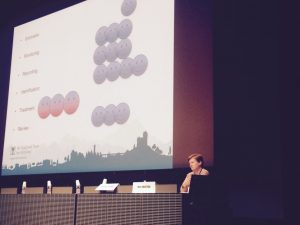Sponsored by Winterthur Museum, Garden and Library
March 15 – 17, 2017
 This year’s host institution, Winterthur Museum, Garden and Library, is fairly new to the fold of the Integrated Pest Management Working Group (IPM-WG). We are grateful for their willingness to provide a welcome meeting space.
This year’s host institution, Winterthur Museum, Garden and Library, is fairly new to the fold of the Integrated Pest Management Working Group (IPM-WG). We are grateful for their willingness to provide a welcome meeting space.
As always, the IPM Working Group meetings are designed to help institutions with active IPM programs by bringing individuals together to tackle projects related to particular pest-related challenges. All information resulting from these collaborations are placed on the MuseumPest.net website for the benefit of the cultural heritage community.
The program is scheduled for 2.5 days, beginning the afternoon of March 15th, with optional tours held across several locations within Winterthur’s Museum, Galleries, Research Building and Gardens. Planned tours will highlight Winterthur’s collection of early American Decorative Arts, its naturalistic garden, conservation labs and the Winterthur/University of Delaware Program in Art Conservation (WUDPAC).
The following two days (March 16-17) will return to the traditional IPM-WG schedule focusing on further development of the online content for the MuseumPest.net website. Short 5-10 minute presentations by participants on IPM-related activities and/or projects at their home institutions are interspersed with the work sessions. If you would like to present to the group, please indicate your interest when you RSVP for the meeting.
There is no fee for attending the program; however, participants are responsible for their own travel, room and board. Additionally, participants are expected to take on an assignment that will result in content for the MuseumPests.net website. The two and a half day program is by invitation only as space is limited.
To request a spot please RSVP by e-mailing: thechair@museumpests.net including: “IPM-WG 2017 Meeting” in the subject line. Your request must include:
Name
Address (Company/institution)
Phone #
E-mail
A paragraph with a description of your IPM responsibilities/projects/institutional needs.
RSVP’s will be accepted through March 1st, 2017 or until spots are filled. Priority will be given to returning participants on a first-come, first-served basis and to new participants who are actively involved in an IPM program in their institution.
Please note: The IPM-WG meetings do not teach IPM and are only appropriate for individuals working with an active IPM program. For more information on establishing a program, please consult the general information on MuseumPests.net.



